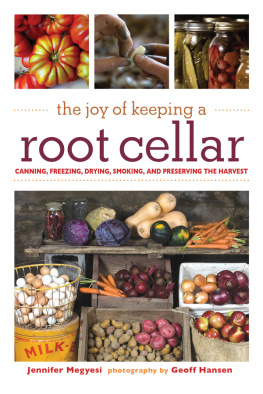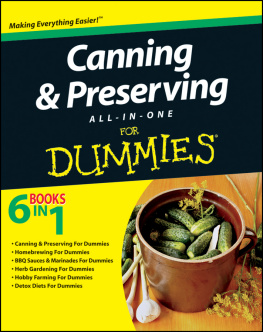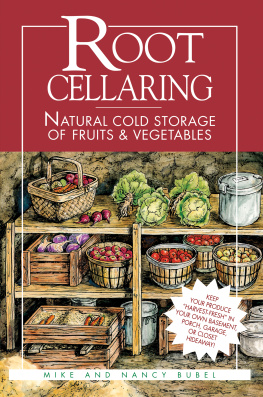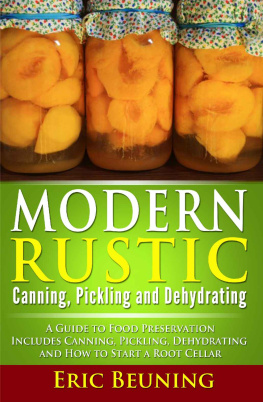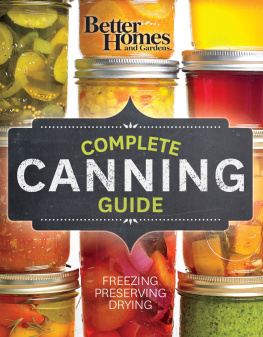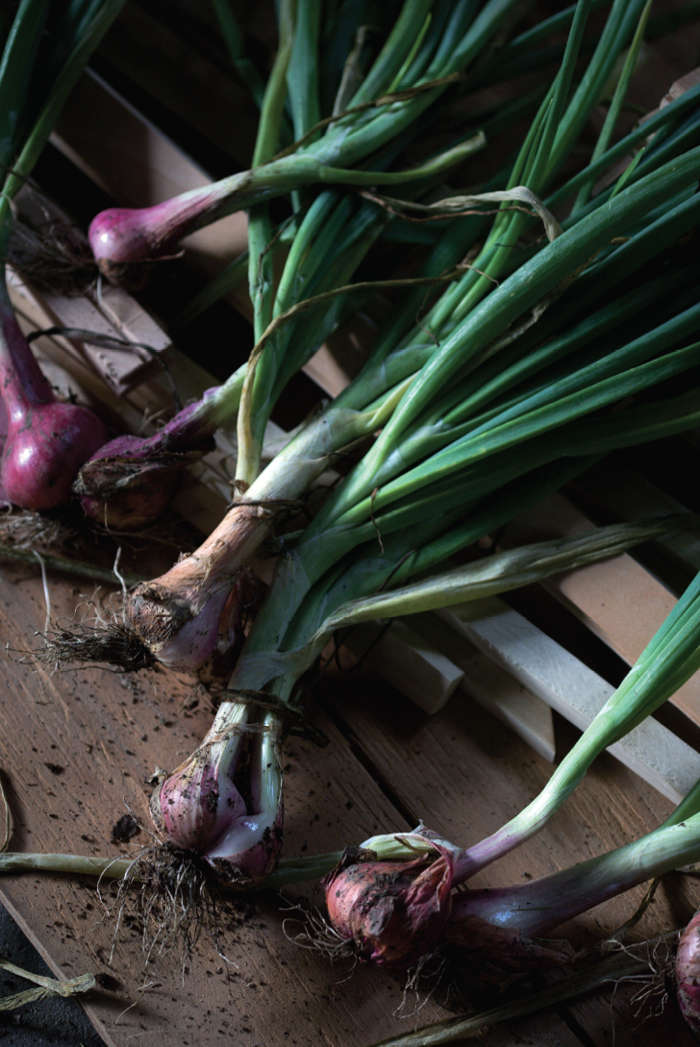Copyright 2010 by Jennifer Megyesi
Photography copyright 2010 by Geoff Hansen
All Rights Reserved. No part of this book may be reproduced in any manner without the express written consent of the publisher, except in the case of brief excerpts in critical reviews or articles. All inquiries should be addressed to Skyhorse Publishing, 555 Eighth Avenue, Suite 903, New York, NY 10018.
Skyhorse Publishing books may be purchased in bulk at special discounts for sales promotion, corporate gifts, fund-raising, or educational purposes. Special editions can also be created to specifications. For details, contact the Special Sales Department, Skyhorse Publishing, 555 Eighth Avenue, Suite 903, New York, NY 10018 or info@skyhorsepublishing.com.
www.skyhorsepublishing.com
10 9 8 7 6 5 4 3 2 1
Library of Congress Cataloging-in-Publication Data
Megyesi, Jennifer Lynn, 1963The joy of keeping a root cellar: canning, freezing, drying, smoking, and cellaring the harvest/
Jennifer Megyesi; photography by Geoff Hansen.
p. cm.
ISBN 978-1-60239-975-4 (pbk.: alk. paper)
1. VegetablesStorage. 2. FruitStorage. 3. Root cellars.
4. Food--Storage. I. Title.
TX612.V4M38 2010
641.48dc22
2010010322
Printed in China
For Grandpa , for his stories of the railroad and for walking with my sister and me to get Cokes in real glass bottles for 30 cents at the corner drugstore. For Grandma, who let me crawl into bed with her when I was a child and comforted me back to sleep. For Grandpapa , who had no patience with my questions and only wanted me to figure out for myself the importance of self-sustenance. And to Grandmama , who gave me the courage to follow my dreams. While only memories of them remain, tucked away in my past as a child, my grandparents taught me that traditions are important enough to be carried out and kept alive in the present.

CONTENTS
PART ONE
Storing and Preserving Fruits, Herbs, and Vegetables

Fruit, Vegetable, and Herb Harvesting and Preparation

Cellaring Food for Storage

Drying Fruits and Vegetables for Storage

Canning Fruits and Vegetables for Storage

Pickling and Fermentation

Freezing Fruits and Vegetables
PART TWO
Preserving Meats and Poultry

Raising Animals with Food Preservation in Mind

Preserving Meat

Preserving Dairy Products and Eggs
Index
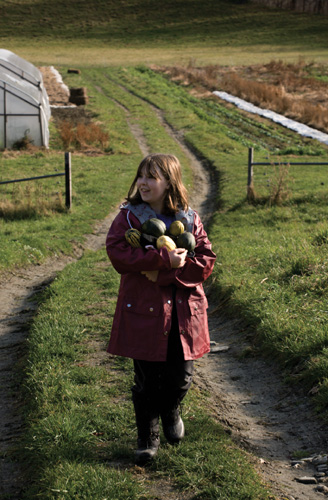
Myia Rogers, 9, a fourth-grader at Randolph Elementary School, carries winter squash she found in a harvested field at the author's farm Fat Rooster Farm in Royalton, Vermont. The students in Linda Garrett's third- and fourth-grade class are part of a school-wide project for which they are studying a particular farm through the year.
Our lives are so disconnected from organic or natural timekeeping and the best efforts of the earth, that once we enter the sterile world of prepackaged supermarkets it is hard to remember that strawberries and tomatoes are not worth eating in January and that onion soup and oranges don't make sense in August.
The Political Palate by the Bloodroot Collective
Preface
THE ART OF FOOD PRESERVATION was as important as spoken and written language for bringing about the means of modern civilization. Enzymes and microorganisms that naturally occur within food as well as the surrounding atmosphere begin to change its composition immediately after it has been slaughtered or harvested. Preservation techniques like drying, fermenting, freezing, and canning preserve food by preventing these processes from occurring. With the advent of food preservation, no longer was it necessary to consume the food directly after it had been killed or harvested; instead, it gave the nomad a surplus to rely upon for later use. Able to make roots in one place, human beings were free to form social structures and bondsvillages, cities, and communities. It became possible for inhabitants to interact and share living experiences with one another on a daily basis throughout the seasons.
More close to home are my childhood memories of the basement in my Grandmama's house outside Detroit, Michigan. The home, in a sea of homes laid out in snaking patterns of uniform shapes and colors (on streets that crisscrossed so much that I once got lost on my bicycle trying to catch the ice-cream truck while it peddled its summer treats), was textbook suburbia, and about as far away from a nomadic living style as you could go. But in that basement, in one tucked-away corner, there were shelves lined with jars of preserved foods.
Memories of a being a ten-year-old can quickly become a muddled stream of fantasy and fact, but some of the most vivid images that remain with me now are of the smell of drying tobacco leaves, sour cherries, pigs feet preserved in gelatin, jams, jellies, rising pastry dough, and fermenting wines. It was cool down there, cool enough to preserve the fruits from the trees growing in the backyard, dark enough to keep the dried herbs that had been grown in the garden fresh in their labeled containers.
My grandparents on my father's side had moved to Detroit from the Louisiana bayou so Grandpapa could work at Ford Motor Company. In Louisiana, they had kept milk cows, grown strawberries, and raised their family in a house that was not much more than a tar paper shack at the end of a dirt road, bordered on both sides by swampland. They knew how to preserve their food, not out of novelty or political correctness, but out of necessity, incorporating all methods of food preservation to provide the family with a steady supply of nutrients. They had figured out how to bypass the pre-packaged, costly, and distant world of the supermarket and still eat sun-dried tomatoes, dilly dough pickles, sauerkraut, and sour cherry pastries, even out of season.
To a child, the mystique and magic of this art did not include the stark realities that my grandparents lived with: poverty, hunger, and marital hardship. Instead, the ability to preserve one's food smacked of the autonomy and comfort associated with self-empowerment and hopeful inspiration.

